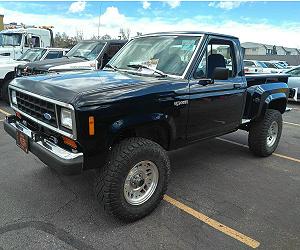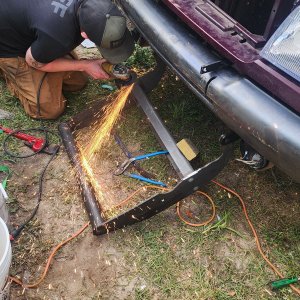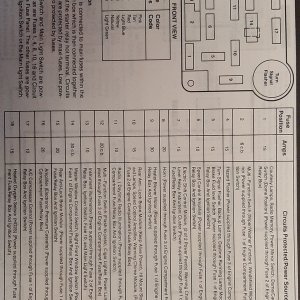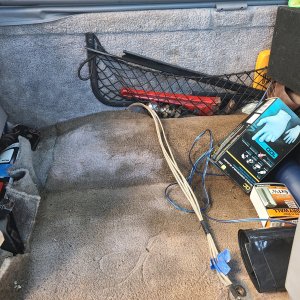Dirmaid
Member
- Joined
- Feb 22, 2011
- Messages
- 273
- Reaction score
- 3
- Points
- 18
- Location
- Louisiana
- Vehicle Year
- 2001
- Make / Model
- Ford
- Engine Size
- 4.0 SOHC
- Transmission
- Automatic
Ok, so I've been researching how to move to a larger injector for power adder purposes, but theres really not a lot of info out there on what it takes to do the swap. So I went ahead and torn down my fuel system to see what's what.
Flow Rate:
Ford classifies the SOHC injectors as a rather low rate injector (I don't have the number right off hand), but they also rate them at a lower than standard fuel pressure. At standard test pressure (43.5 psi/3 Bar) they flow around 25 lbs/hr. As far as I know, any returnless system with the SOHC runs between 55-65 psi. This effectively means that they should flow an average of 29 lbs/hr (which is a bit overkill on a stock NA motor in my opinion). Here's a pretty interesting forum post that backs up this data : Link
Dimensions:
It's pretty easy to find out that SOHC injectors are some proprietary units specially made for the engine. They have Bosh design III bodies, with the exception of being pretty much exactly a half inch shorter than regular ones. They also utilize an EV1 plug and have the 4-hole nozzles. In the head itself, the injector seat was overbored on purpose to allow the fitment of an injector "seal." This is basically just there to reduce heat transfer and minimize fuel boiling in the injector after the engine is turned off. REPLACE THESE SEALS. 3/6 of mine were cracked and I didn't trust the other 3. They are made of a hard plastic and are very brittle. I used a hook pick and some kroil to work mine out of the heads. They are Ford part number F77Z-9G512-AA and cost around $7 a piece at time of writing.
Comparison:
The blue injector is a stock SOHC, the white is a Bosch 36lb injector. Notice the different lengths in the bodies and the shape of the plastic tips around the nozzles. The new one has a flat disc, while the old ones have a tapered design to them. Some people have reported the discs breaking as they put them in the injector seals, but I had no issues during test fit or final mock up.


Fitment:
As picture below, the fuel rail mounts directly to the head with 4 M8 1.25 pitch bolts (2 each side). Luckily, these mounts are parallel to the injectors, so a simple 1/2" spacer and a longer bolt will allow the fuel rail to properly mate with the new injectors. I put a washer between the spacer and the head because I don't like the idea of that much pressure and vibration being transferred through such a small surface area. If you're worried if the injectors are seated correctly, you should be able to twist them in their seats with minimal effort. If there's binding, check that you didn't mess up an o-ring.

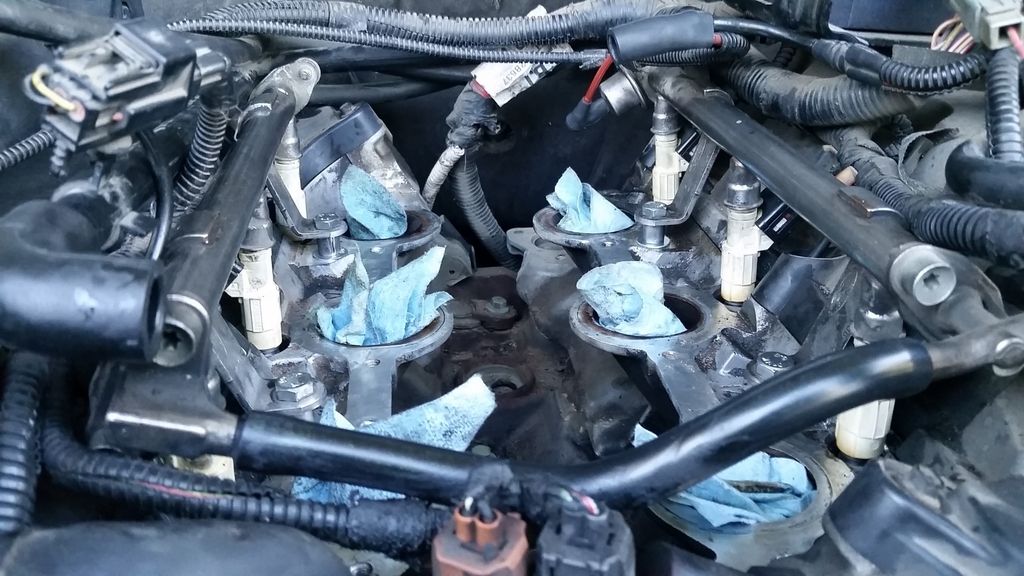
Clearance:
I was worried that the fuel rail would be too high up for the intake manifold to sit back down properly (Speaking of which, now would be a good time to replace those gaskets). The fuel rail actually clears everything with about a 1/4" all around, with the exception of the vacuum port behind the throttle body on the passenger side. I have light contact on the larger rubber elbow, but as my old shop boss used to say, "Rubbin aint touchin." I'll report back if that appears to have any issues.
Afterthoughts:
If you're looking to replace these injectors or are looking to upgrade to bigger ones, remember to compensate for the higher fuel pressure. A 36lb flows 42lbs on this setup. A good site to help calculate this increase is here: Link
As always, if you're gonna put bigger injectors in, TUNE THE VEHICLE. More fuel doesn't mean more power, it's the combination of air, fuel, and spark. If you don't tell the computer its now flowing significantly more fuel, you're gonna see a major decrease in power and fuel economy, possibly even engine damage.
Flow Rate:
Ford classifies the SOHC injectors as a rather low rate injector (I don't have the number right off hand), but they also rate them at a lower than standard fuel pressure. At standard test pressure (43.5 psi/3 Bar) they flow around 25 lbs/hr. As far as I know, any returnless system with the SOHC runs between 55-65 psi. This effectively means that they should flow an average of 29 lbs/hr (which is a bit overkill on a stock NA motor in my opinion). Here's a pretty interesting forum post that backs up this data : Link
Dimensions:
It's pretty easy to find out that SOHC injectors are some proprietary units specially made for the engine. They have Bosh design III bodies, with the exception of being pretty much exactly a half inch shorter than regular ones. They also utilize an EV1 plug and have the 4-hole nozzles. In the head itself, the injector seat was overbored on purpose to allow the fitment of an injector "seal." This is basically just there to reduce heat transfer and minimize fuel boiling in the injector after the engine is turned off. REPLACE THESE SEALS. 3/6 of mine were cracked and I didn't trust the other 3. They are made of a hard plastic and are very brittle. I used a hook pick and some kroil to work mine out of the heads. They are Ford part number F77Z-9G512-AA and cost around $7 a piece at time of writing.
Comparison:
The blue injector is a stock SOHC, the white is a Bosch 36lb injector. Notice the different lengths in the bodies and the shape of the plastic tips around the nozzles. The new one has a flat disc, while the old ones have a tapered design to them. Some people have reported the discs breaking as they put them in the injector seals, but I had no issues during test fit or final mock up.


Fitment:
As picture below, the fuel rail mounts directly to the head with 4 M8 1.25 pitch bolts (2 each side). Luckily, these mounts are parallel to the injectors, so a simple 1/2" spacer and a longer bolt will allow the fuel rail to properly mate with the new injectors. I put a washer between the spacer and the head because I don't like the idea of that much pressure and vibration being transferred through such a small surface area. If you're worried if the injectors are seated correctly, you should be able to twist them in their seats with minimal effort. If there's binding, check that you didn't mess up an o-ring.


Clearance:
I was worried that the fuel rail would be too high up for the intake manifold to sit back down properly (Speaking of which, now would be a good time to replace those gaskets). The fuel rail actually clears everything with about a 1/4" all around, with the exception of the vacuum port behind the throttle body on the passenger side. I have light contact on the larger rubber elbow, but as my old shop boss used to say, "Rubbin aint touchin." I'll report back if that appears to have any issues.
Afterthoughts:
If you're looking to replace these injectors or are looking to upgrade to bigger ones, remember to compensate for the higher fuel pressure. A 36lb flows 42lbs on this setup. A good site to help calculate this increase is here: Link
As always, if you're gonna put bigger injectors in, TUNE THE VEHICLE. More fuel doesn't mean more power, it's the combination of air, fuel, and spark. If you don't tell the computer its now flowing significantly more fuel, you're gonna see a major decrease in power and fuel economy, possibly even engine damage.

